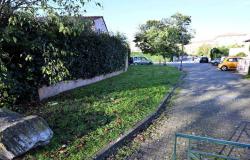Coffee has rarely been so expensive: its Arabica variety reached a record price for nearly three decades on Monday, due to limited supply, amid concerns about harvests in Brazil. The pound of Arabica listed in New York recorded its highest level since 1997 on Monday, at 312.80 cents, up 40% since January.
For its part listed in London, robusta, which now trades around 5,000 dollars per tonne, reached a record price of 5,829 dollars in mid-September, unheard of since the opening of the current reference contract in 2008. This price would even be unprecedented since the 1970s according to the Bloomberg agency which relies on archives from the New York Stock Exchange.
Food: these labels that mislead consumers
Bad harvests
At issue: fears of “ poor harvests due to weather conditions » unfavorable earlier this year, particularly in Brazil, the world's leading producer of coffee, and arabica in particular, which push producers to hold back their production, despite strong demand, summarizes Jack Scoville, analyst at Price Futures Group.
After a “ long dry and hot period “, the coffee trees in Brazil had benefited from ” significant rain » in October, contributing to “ exceptional flowering in most arabica coffee-producing regions », According to Guilherme Morya, of Rabobank. But the analyst notes a “ uncertainty over the progress of flowering, which raises significant concerns » on the 2025/26 harvest. If the flowers do not attach themselves to the branches, they will not be able to later turn into cherries, which contain the coffee beans.
Climate: global emissions continue to increase
A supply that is becoming rarer
This prospect, combined with geopolitical factors such as shipping disruptions in the Red Sea, potential US tariffs and the European Union's future regulation on deforestation, point to a rise in prices.
« In this context of uncertainty, farmers choose to only sell what is necessary, thus limiting the supply of coffee on the local market », concludes Guilherme Morya.
These supply fears also concern Vietnam, the leading producer of the cheaper robusta variety, used for example for instant coffee. Faced with the difficulties of producing countriesroasters are now eyeing Africa, which could increase its production capacities.
It is with this in mind that the G7 development ministers gave the green light on October 23 in Pescara to the creation of a Global Fund to support the coffee sector. This is a project of the International Coffee Organization (ICO), which will initially be tested in five African countries (Ethiopia, Uganda, Tanzania, Kenya and Malawi) before being replicated in Central America and Asia. The initiative aims to create a public-private fund and is part of the ambitions of the “Mattei plan for Africa”, dear to Giorgia Meloni, head of the Italian government, which seeks to promote a virtuous model of collaboration and of growth between the European Union (EU) and African nations.
(With AFP)






